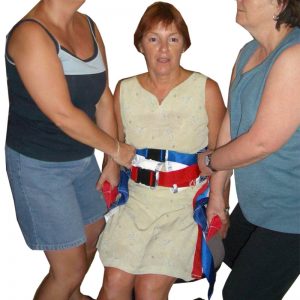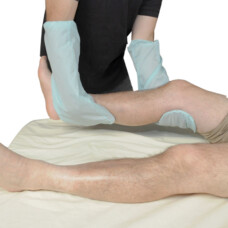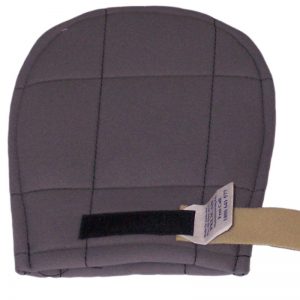The ResQsheet for Vinyl & Carpet is for the emergency evacuation of non-ambulant Patients. Daily bed making is as normal. It is designed to fit Single & King Single size beds.
It is designed for Single and some King Single size beds. An alternative product is the ResQsheet for Vinyl & Carpet – Deep & Airflow, which is designed for most air-flow mattresses for pressure care.
Overview
- The Patient is protected by their mattress and can be taken down stairs to safety
- Pulling Straps sewn half way down the length to allow for more rescuers
- Cross Straps sewn all the way across the material for extra strength
- Built in plastic slide board – excellent for sliding on all surfaces, especially carpet & vinyl
- Strong elastic corner straps
- Plastic buckles – safer than metal buckles/will not damage a washing machine
- Miracle Grip on the sides to help prevent the mattress slipping on bed frame (Patent Applied For)
- Press studs & pockets to safely contain the straps
Special Features
The ResQsheet for Vinyl & Carpet is made from a strong white nylon material which is easy to see in the dark when taken outside if an evacuation takes place at night.
It is always best to avoid the straps becoming tangled on the bed, as this could delay a fast evacuation. To help keep the straps in place, we have included Press Studs (Patent applied for) and pockets that keep all of the straps secured to the ResQsheet when under the mattress.
To Install
Position the ResQsheet under the mattress with the four elastic straps over each corner of the mattress to help keep the it in position when bed making. Fold the Cross Straps and secure into the pockets provided, ready for easy access in an emergency. Secure the Head and Foot Straps using the Press Studs.
To Use
Pull the Cross Straps out of the pockets or elastic loops and join the buckle with the strap from the opposite pocket over the Patient and bed clothes. A pillow may be placed under the Cross Straps on the Patient’s chest, and another across their legs, to help further protect them.
Pull the Cross Straps tight to cocoon the Patient, complete with sheets and blankets still on the mattress. Take out the Head and Foot Pulling Straps from under the mattress. Lower the bed as far as possible.
Use the Pulling Straps to lower the Patient and mattress off the bed and slide along the floor by using the long Pulling Straps at either end. ResQSheet Extension Straps (sold separately) are available which can fit to any of the ResQ products to allow for more people to pull.
After evacuation, the Patient can be left cocooned in the ResQsheet, which may be helpful with Patients who are liable to wander.
Testing
The materials used to make the ResQsheets are the same as we use for our Lifting Slings.
When carrying out ‘In House’ testing, the ResQsheet were pulled at a fast walking speed on carpet and vinyl, with a load of 104kg / 229lbs. The test results can vary on different grades of carpet depending on the pile and underlay. With vinyl flooring, the type of vinyl and any polishes or cleaning materials used may also affect the pulling force. Therefore these results are just an indication of the reduction.
The Initial Force was when the ResQsheets were on the floor. When starting to slide, the initial force should be less. The table below shows the forces in relation to the ResQsheet, and the ResQsheet for Vinyl & Carpet. If there are long corridors of carpet, we recommend using the ResQsheet for Vinyl & Carpet.
| Item Name | Pulling Weight | Carpet Floor Initial Force | Carpet Floor Sliding Force | Vinyl Floor Initial Force | Vinyl Floor Sliding Force |
| ResQsheet | 104kg / 229lbs | 36kg / 73lbs | 24kg / 54lbs | 35kg / 78lbs | 30kg / 67lbs |
| ResQsheet for Vinyl & Carpet | 104kg / 229lbs | 30kg / 67lbs | 15kg / 34lbs | 39kg / 87lbs | 38kg / 85lbs |
There are many names by which this type of item is known, including: Evacuation Sheets, Fire Sheets, Fire Rescue Sheets, Fire Evacuation Sheets, Fire Blankets, or Ski Sheets.
Click here to view the Features List for the range of Pelican evacuation devices.
The full range of ResQproduct options are listed below
 |
ResQsheet | Stored under the Patient’s mattress on the bed and is ready to use, with the Patient then evacuated with their mattress. Slides well on most vinyl floors. |
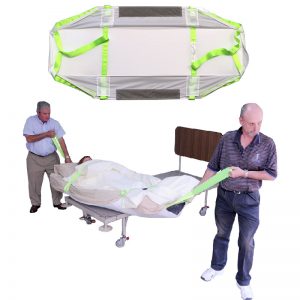 |
ResQsheet for Vinyl & Carpet | Stored under the Patient’s mattress on the bed and is ready to use, with the Patient then evacuated with their mattress. Slides well on most vinyl floors including vinyl & carpet. |
 |
ResQsheet for Vinyl & Carpet – Deep & Airflow | Stored under the Patient’s mattress on the bed and is ready to use, with the Patient then evacuated with their mattress. Slides well on most vinyl floors including vinyl & carpet. Design for deep and airflow mattresses. |
 |
ResQme | This is kept in storage and taken to a Patient who needs to be evacuated. A budget option evacuation device. |
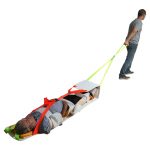 |
ResQpod | Same as the ResQme above, but with more Cross Straps to contain the Patient. |
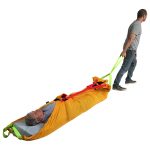 |
ResQmat | Same as the ResQme and ResQpod above, but with a built-in mini-mattress for comfort, and the side material can enclose the Patient. |
 |
ResQslide Board & Chair Strap Kit | The ResQslide Board & Chair Strap Kit is used to slide someone from a wheelchair to an evacuation device on the floor, such as the ResQmat, ResQpod or ResQme which can slide down stairs. |










